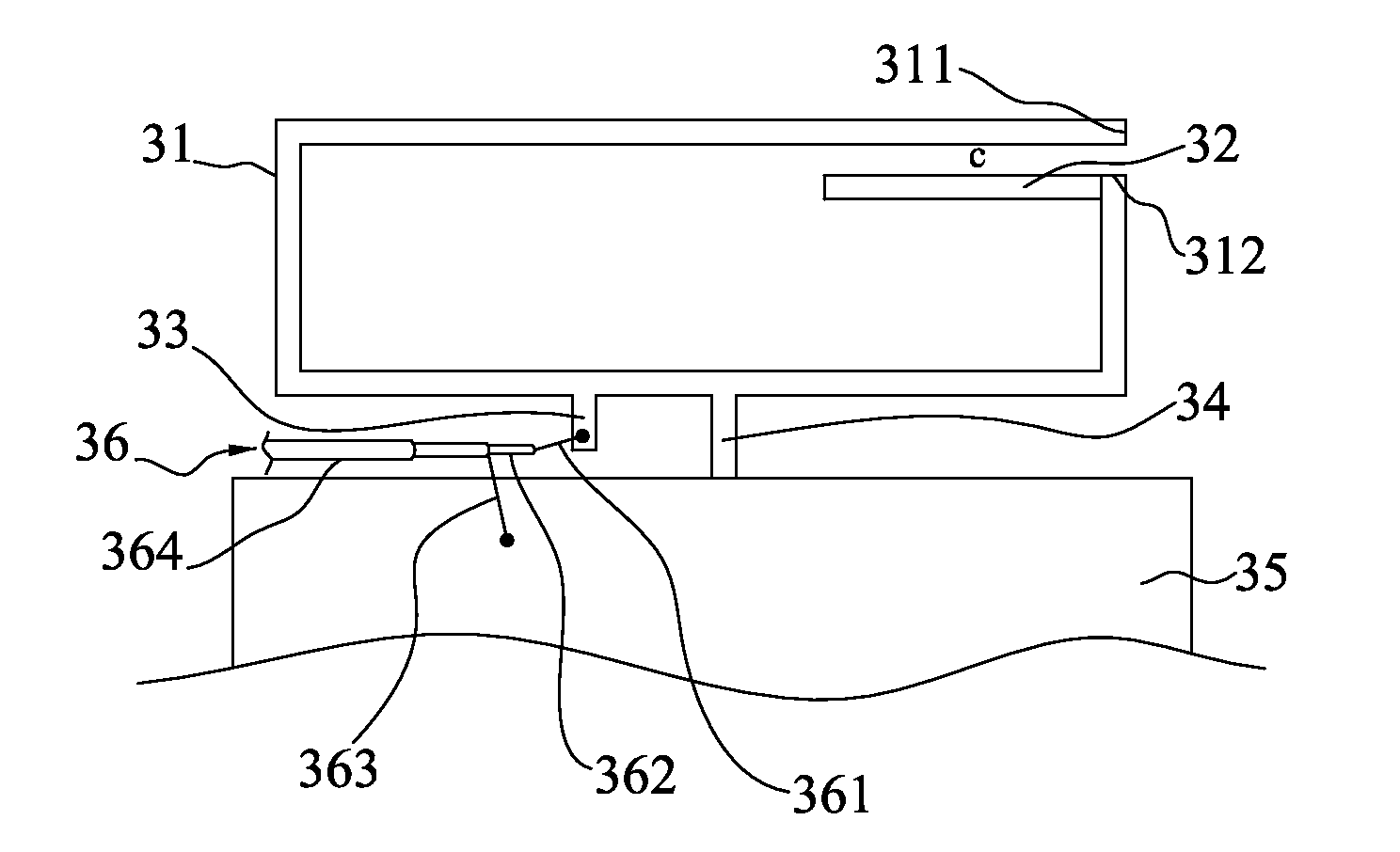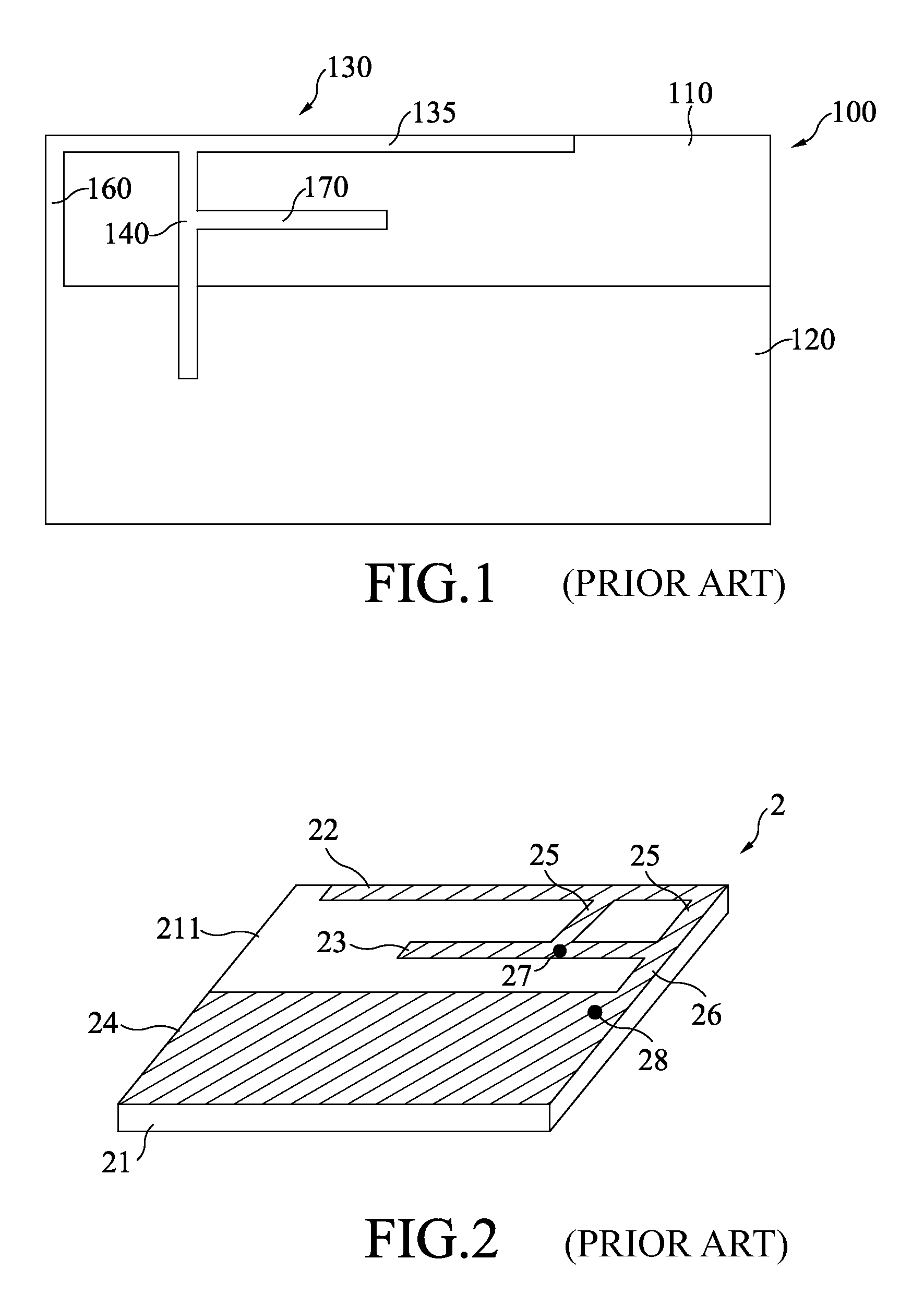Dual-frequency antenna
- Summary
- Abstract
- Description
- Claims
- Application Information
AI Technical Summary
Benefits of technology
Problems solved by technology
Method used
Image
Examples
first embodiment
[0023]Referring to FIG. 3, a top view schematically shows the present invention. The dual-frequency antenna of the present invention comprises a radiation conductor 31, an extension conductor 32, a feeder member 33, a short-circuit member 34, a ground plane 35, and a feeder cable 36. The radiation conductor 31 has a first terminal 311 and a second terminal 312. The feeder cable 36 further comprises a central wire 361, an insulating layer 362, an outer wire 363 and a coating 364 in sequence.
[0024]The radiation conductor 31 resembles a C shape. The first terminal 311 and the second terminal 312 of the radiation conductor 31 are arranged close to each other but do not contact each other. The extension conductor 32 is connected to the second terminal 312 and disposed along the contour of the first terminal 311 to have a gap C between the extension conductor 32 and the first terminal 311, and the gap C generates a capacitive coupling effect to increase the radiation transmission efficien...
second embodiment
[0031]In addition to the low-frequency resonant mode and the first high-frequency resonant mode generated by the radiation conductor 31, the parasitic conductor 37 generates a second high-frequency resonant mode in the second embodiment to increase the transmission bandwidth of the high-frequency frequency band. Thus, the present invention can improve the problem of insufficient bandwidth and inferior matching in the conventional dual-frequency.
[0032]Referring to FIG. 7 a diagram shows VSWR (Voltage Standing Wave Ratio) measurement results of the dual-frequency antenna according to the second embodiment of the present invention. When a bandwidth S3 and a bandwidth S4 are defined by a voltage standing wave ratio of 2.5, the bandwidth S3 ranges from 800 MHz to 960 MHz, which covers the AMPS system (824-894 MHz) and GSM system (880-960 MHz), and the operation frequency of the bandwidth S4 ranges between 1400 and 2600 MHz, and the frequency band covers the GPS system (1575 MHz), DCS sys...
PUM
 Login to View More
Login to View More Abstract
Description
Claims
Application Information
 Login to View More
Login to View More - R&D
- Intellectual Property
- Life Sciences
- Materials
- Tech Scout
- Unparalleled Data Quality
- Higher Quality Content
- 60% Fewer Hallucinations
Browse by: Latest US Patents, China's latest patents, Technical Efficacy Thesaurus, Application Domain, Technology Topic, Popular Technical Reports.
© 2025 PatSnap. All rights reserved.Legal|Privacy policy|Modern Slavery Act Transparency Statement|Sitemap|About US| Contact US: help@patsnap.com



